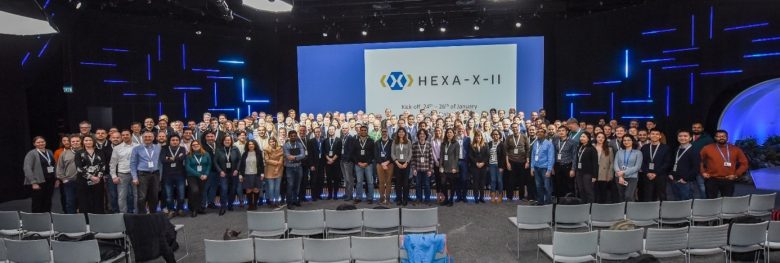Even though deployment of 6G is foreseen only from 2030, research activities have been ramping up for the past few years, in academia and industry, with the emergence of dedicated conferences, fora and collaborative projects. Orange is involved in two major projects funded by the European Commission, Hexa-X and more recently Hexa-X-II, to design a sustainable 6G. These two projects represent unique endeavors, uniting the skills of various operators, industries, SMEs and academia across Europe to lead the design of a next generation of mobile communications, with sustainability, inclusion and trustworthiness as core values and cornerstones of the system design. Led by Nokia and Ericsson as technical manager, both projects include key players in the industry, academia and innovative SMEs (Small and Medium Enterprises).
The project will involve representatives of future users at the early stages of the design, to onboard their needs and feedback to ensure the relevance of future 6G services for society

Hexa-X defines a vision for 6G, with sustainability, inclusion and trustworthiness as core values and builds the technical foundations
The European Commission initiated a first series of projects on 6G in 2021, as part of the Horizon-2020 Framework Programme. This cluster of projects, answering to the call ICT-52 “5G PPP – Smart Connectivity beyond 5G”, included a first flagship project on 6G, Hexa-X. The project, led by Nokia as Overall lead and Ericsson as Technical Manager, started in January 2021 for a duration of 2.5 years, with the high-level objectives of defining the vision of 6G and developing key technology enablers to connect the human, physical and digital worlds and lay the foundations of 6G. The project gathers 25 organizations across Europe, involving vendors, operators, highly recognized academics and Small and Medium Enterprises (SMEs) to develop innovative solutions and create impact. The project already produced a comprehensive set of results and more are upcoming by the end of the project in June 2023. The partners defined an underlaying vision for 6G, combining the technology enablers in a modular architecture to serve three core values: sustainability, trustworthiness and inclusion. A set of use cases has also been identified, as well as the relevant requirements to guide the design of technologies. Different technology enablers are investigated and assessed, from radio technologies to architectural enablers, natively embedding Artificial Intelligence (AI) in the design. Hexa-X has been at the forefront of the 6G scene, sharing the project outcomes in various events, conferences and exhibitions.
Hexa-X-II integrates vision, requirements and technologies into a 6G platform, for an environmentally, socially and economically sustainable 6G
While project Hexa-X is entering its last months, the European Commission launched in January 2023 a new flagship project on 6G, Hexa-X-II, for a 30-months duration. This project will continue the preparation of 6G based on the foundations established by Hexa-X: in particular, it will refine the use cases and services from the perspective of providing value for society and meeting the expectations from future users. The project will innovate by consulting and involving different representatives from future users, including representatives from society, to capture their needs into the specification of relevant use cases. Hexa-X-II will derive from these use cases the requirements and design targets for 6G.
But Hexa-X-II will also extend the outcomes of Hexa-X and take them to a higher level, with a transition from the research phase on technology enablers to the systemization phase, integrating these enablers into an end-to-end (E2E) platform. Hexa-X-II will also develop further the technology enablers for the air interface, natively integrating the sensing, compute and Artificial Intelligence (AI) capabilities of the network to develop new services. The three core values, Sustainability, Inclusion and Trustworthiness, will be targets for the development of selection of the technologies. The project will ensure the maturity and readiness of the technology, and will create impact at the international level, preparing the international standardization activities.
Hexa-X-II will build on an extended consortium of 44 partners, encompassing industry players, SMEs and academics across Europe and addressing the different levels of the network, from chipset and hardware to service providers, including system, platform and software levels. As in Hexa-X, Nokia is Overall Lead and Ericsson is Technical Manager, with Orange, Technische Universität Dresden, University of Oulu, IMEC, ATOS and Telecom Italia playing leading roles in the management of the different Work Packages of the project.

Participants to the Hexa-X-II kick-off meeting in Espoo, Finland, in January 2023
Orange in a leading role to position 6G on the road to sustainability
Orange developed a vision for 6G, published in a White Paper in 2022, stating that this new generation should deliver value for society, in a secure, resilient, environmentally and economically sustainable way. To ensure the relevance of future 6G services for society, Orange proposed to involve representatives of future users at the early stages of the design, to onboard their needs and feedback. In Hexa-X-II, Orange leads the Work Package on 6G values and requirements, which will leverage interaction with society representatives to define use cases and relevant requirements, in order to guide the design of a new generation towards delivering value to its future users and stakeholders.











